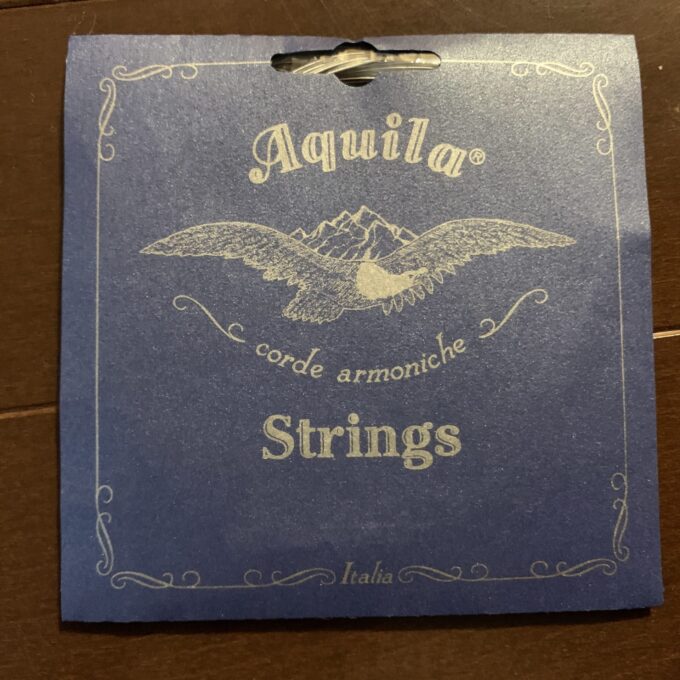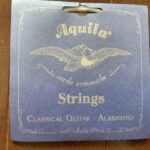This post is also available in:
![]() 日本語 (Japanese)
日本語 (Japanese)
When it comes to the core wire of the bass string of a modern classical guitar, nylon is the mainstream. However, in the past, silk was used. Aquila’s Rayon recreates the sound of that time using modern materials. As the name suggests, it is made of rayon.

The following article summarizes the string reviews/impressions/information articles in this blog
Silk with problems due to natural materials
Before nylon began to be used for classical guitar strings, silk was used as the core wire for bass strings. However, silk has a problem because it is a natural material.
- The pitch is not stable
- Changes greatly depending on humidity
- fragile
For this reason, Aquila searched for various chemical materials that sound like silk.
Also, silk is expensive material. Figaro, a Japanese string maker, also sells silk core wire strings, but they cost 4,500 yen for a set of 4,5,6 strings.
And then I arrived at rayon
Rayon was the material they finally settled on.
Rayon is a man-made fiber, but it is not derived from petroleum. It is made by extracting cellulose from wood pulp. It has a luster similar to silk, and is also called “human silk” or “artificial silk thread”. It is a suitable material as a substitute for silk.
FYI, the word “rayon” itself was created by combining the words “ray” and “cotton”.
Looks like a very ordinary bass string
The strings are made of rayon, but they look like ordinary bass strings.
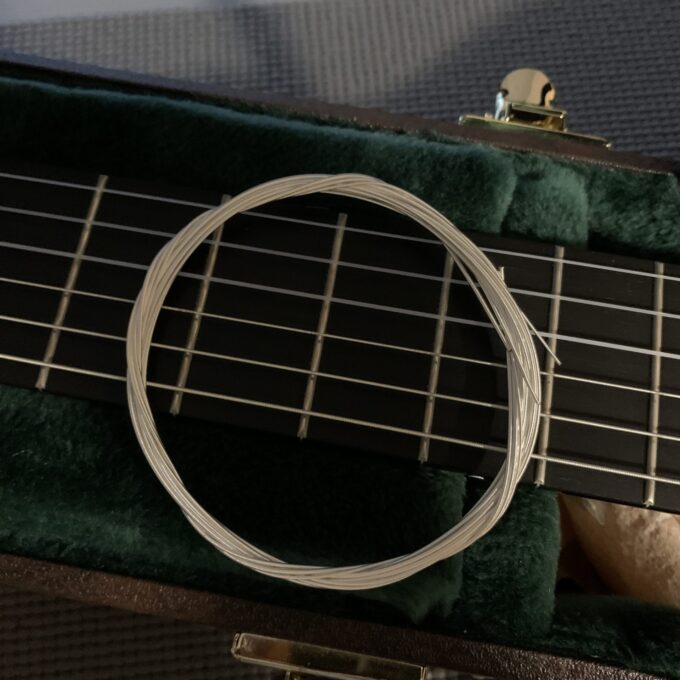
The winding wire is an ordinary silver-plated metal, so from the outside you can’t tell what the core wire is.
However, the core wire seems to be red, and you can see a little red when you look at it from the side. The photo is taken by cellphone and you may not be able to see it well…
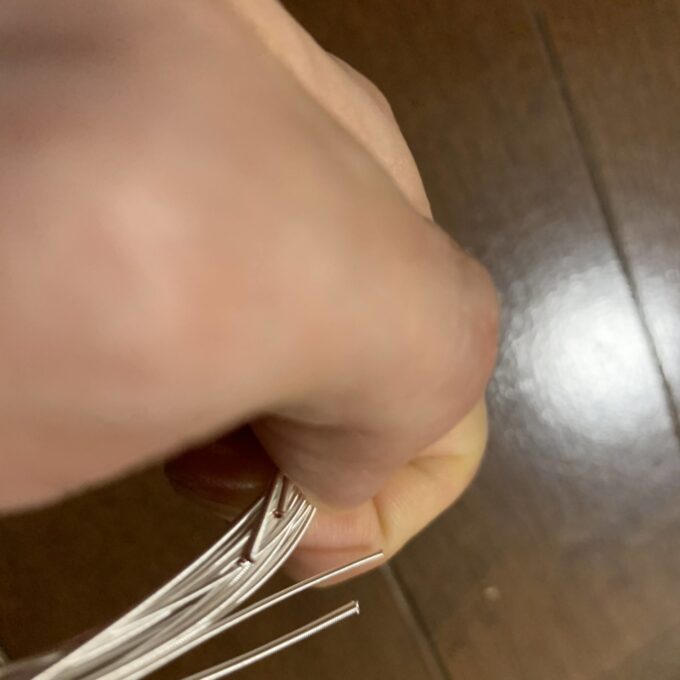
Even after you put them on your guitar, they feel like normal strings.
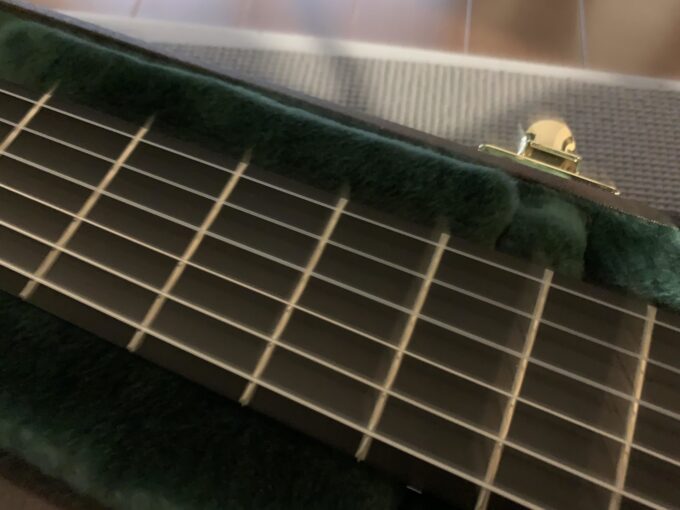
Sound is totally different from nylon core wire
The sound was completely different from the normal nylon core wire strings.
The sound is soft and gentle, with no metallic sound at all.
For the treble strings, I used Aquila’s Alabastro, which is also a reproduction of gut strings.
The connection between the 4th and 3rd strings is not bad, and when you play piecies, you will be surrounded by a soft and gentle sound.
But it was too incompatible with my instrument. It doesn’t fit a modern instrument with raised fingers . It should be good with a replica of a 19th century guitar or a Torres model.
For those who want to experience the sound of an old guitar
It may be hard to use them regularly on a modern classical guitar, but I thought they were a good string to experience the sound of instruments from the time of Sor and Giuliani. The price is not expensive, less than 1,000 yen. They are not sold in Japan, so it is a little troublesome to buy them from String by Mail or other oversea shops.
Of course, it is also recommended for those who have replicas of 19th century guitars.
I don’t think these strings will be hugely popular, but I personally love Aquila for putting out this kind of stuff. One after another, classical guitar string manufacturers are disappearing, but I hope they keep up the good work.
